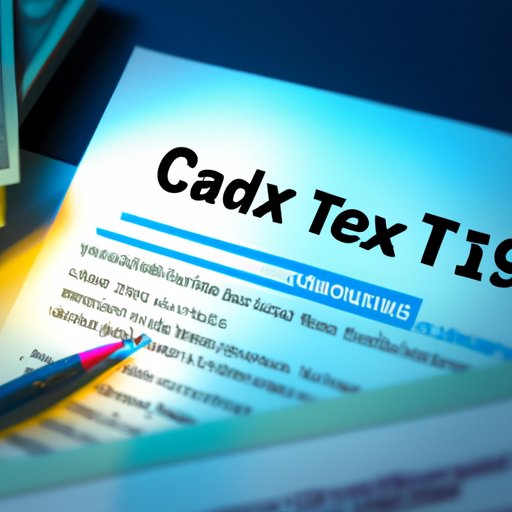Introduction
Tax credits are a great way to reduce your taxable income and maximize your tax refund. But what exactly are tax credits, and how do they work? In this article, we’ll explore the different types of tax credits available, how they affect your tax returns, and who is eligible to claim them. By the end, you’ll have a comprehensive understanding of how to use tax credits to your advantage.

Explaining What Tax Credits Are
Tax credits are incentives offered by the government to encourage certain behaviors or activities. Unlike tax deductions, which reduce the amount of income that is subject to taxation, tax credits directly reduce the amount of taxes owed. According to the Internal Revenue Service (IRS), “A tax credit is an amount that reduces the amount of tax you owe. It usually provides more tax savings than a deduction.”
There are two main types of tax credits: nonrefundable and refundable. Nonrefundable tax credits can reduce your tax liability down to zero but no further. Refundable tax credits, on the other hand, can actually increase your tax refund if the amount of the credit exceeds the amount of taxes due.
Some common examples of tax credits include the Child Tax Credit, Earned Income Tax Credit, Education Tax Credit, and Retirement Savings Tax Credit.
Outlining the Different Types of Tax Credits
The Child Tax Credit is available for taxpayers who have dependents under the age of 17. The amount of the credit is up to $2,000 per qualifying child, depending on the taxpayer’s income. The Earned Income Tax Credit is designed to help low-income workers by providing a tax credit of up to $6,660. The Education Tax Credit helps students and parents offset the costs of tuition and other education-related expenses. Finally, the Retirement Savings Tax Credit is available to taxpayers who make contributions to a qualified retirement plan.

Examining How Tax Credits Affect Your Tax Returns
Tax credits can have a major impact on your tax return. First, they reduce your taxable income, which can result in lower taxes due. Second, they can increase the size of your tax refund if the amount of the credit exceeds the amount of taxes due. For example, if your total tax due is $1,000, but you qualify for a $2,000 tax credit, you will receive a tax refund of $1,000.

Investigating Eligibility Requirements for Tax Credits
In order to claim a tax credit, you must meet certain eligibility criteria. These criteria vary depending on the type of credit being claimed, but typically include income limits and dependent status. For instance, the Child Tax Credit is only available to taxpayers with dependents under the age of 17 and an adjusted gross income of less than $200,000 for married couples filing jointly or $400,000 for all other filers.
Summarizing the Benefits of Claiming Tax Credits
Claiming tax credits can provide significant financial benefits, particularly for taxpayers with low incomes. By reducing taxable income, tax credits can lower the amount of taxes owed and maximize tax refunds. According to CPA Carol Harnett, “Tax credits are one of the most powerful ways to reduce your tax bill. They are dollar-for-dollar reductions of your tax liability, meaning they reduce the amount of tax you owe.”
Conclusion
Tax credits are an excellent way to reduce your taxable income and increase your tax refund. Knowing which credits you qualify for, and how to claim them, can help you get the most out of your taxes. By taking advantage of the various tax credits available, you can save money and possibly even increase your tax refund.
(Note: Is this article not meeting your expectations? Do you have knowledge or insights to share? Unlock new opportunities and expand your reach by joining our authors team. Click Registration to join us and share your expertise with our readers.)
